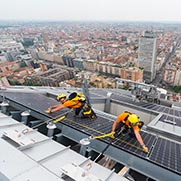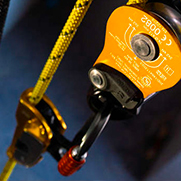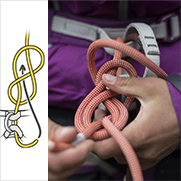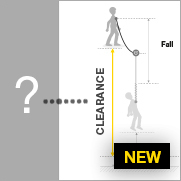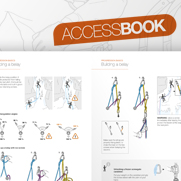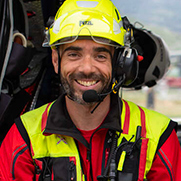Choice of carabiner for attaching a descender with a safety gate (I’D S, RIG, STOP...) to the harness
Warnings
- Carefully read the Instructions for Use used in this technical advice before consulting the advice itself. You must have already read and understood the information in the Instructions for Use to be able to understand this supplementary information.
- Mastering these techniques requires specific training. Work with a professional to confirm your ability to perform these techniques safely and independently before attempting them unsupervised.
- We provide examples of techniques related to your activity. There may be others that we do not describe here.
Key issues and risks
When the rope is taut, the carabiner and the device are held in position by the tension.
But when the rope is slack, the device and its carabiner can move about and become poorly positioned. So there is a risk of rubbing on the sleeve, or of cantilever loading between the device and the harness attachment point.
The most important risks to consider
Recommendation on carabiner and accessories
- Use an Am'D carabiner and a CAPTIV bar
- Choose a locking system suited to your use
Reliability in dirty environments (mud, sand...)
Security of locking
Security of locking
Why this choice?
Am'D
The asymmetry of the D shape allows for good load distribution and helps resist carabiner rotation. For this use, there is only one device to attach, so a wide opening and high capacity are not necessary.
CAPTIV
- On devices with a safety gate, the rope can be inserted without detaching the carabiner, so it's possible to fix the device on the carabiner with the CAPTIV bar.
- The CAPTIV limits poor carabiner positioning.
- The carabiner is held in the position chosen by the user, for example with the locking sleeve on the moving side-plate side of the I'D.
- The remaining risk of the locking sleeve rubbing against the harness attachment point must be monitored by the user. It is more or less important depending on the situation and locking system used
Precautions for use
- Regularly verify that the carabiner stays loaded on the major axis, especially when it is reloaded after having been unloaded.
- With an auto-locking carabiner, check at each opening and closing that the sleeve is completely locked.
- Install the carabiner with the sleeve facing yourself, (moving side-plate side), to avoid accidental pressure on the locking sleeve from the structure, in case of tight passages or false moves.
- Avoid any pressure or rubbing that could damage or unlock the locking sleeve, and/or cause the gate to open.
- At work, use a second belay system in addition to your progression system.


